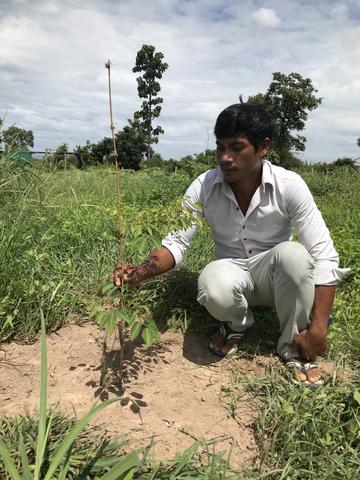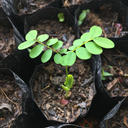The race to save rosewoods, the world's most trafficked wild species
The images we associate with the illegal wildlife trafficking are often charismatic animals – but the most trafficked wild species globally is actually Dalbergia, the rosewood tree.
Like many other species exploited by humans, the situation for rosewood trees is bleak. Timber harvested from rosewoods has been the world’s most trafficked wild product since 2005, accounting for 30–40% of the global illegal wildlife trade – more than all animal products put together. Overharvesting to produce luxury furniture and musical instruments has led to around 90% of wild populations vanishing across their native Southeast Asia. Even those that remain in protected areas are targeted by violent illegal poaching activities – giving the trees the alternative name of ‘bloodwood'. On top of this, the ever-growing threat of climate change is already beginning to alter weather patterns in these regions. Dr Tin Hang (Henry) Hung said:
“The rosewood trade is deeply complex, involving many different actors across multiple countries, including indigenous people who depend on selling forestry products to survive. Any attempt to restore rosewood populations therefore needs to be a collaborative approach that addresses the underlying issues fuelling this trade, particularly extreme poverty.”
An international collaboration, led by Oxford, was formed for rosewood conservation to address issues faced by the species. Professor John MacKay, one of the leaders of the project, said:
“Our aim was to use a holistic approach to address the largest barriers to effective rosewood conservation. These included limited cross-country collaboration, an acute lack of planting material, lack of information about remaining rosewood populations, and a limited capacity for local people to generate livelihoods from forest restoration.”

Cambodian farmer Mr Sok Em with rosewood seedlings established on his farmland
Image: IRD Cambodia
Over 300 local people have been supported to establish rosewood nurseries, with training in seed collection, seedling production, and marketing. As well as enhancing local incomes, many indigenous communities have become newly engaged in the sustainable management of natural resources. With financial empowerment inextricably linked to gender equity, a key goal for the project was to improve gender representation within the traditionally male-dominated forestry trade, and the team ensured that at least a third of the indigenous people trained in each country were women.
However, planting more trees isn’t a complete fix; with decimated wild populations, low genetic diversity is a major concern, causing reduced seed production, seedling survival, and growth. Furthermore, the effects of climate change mean that trees planted today may not be suited to conditions in the near future. A key priority for the project was therefore to map the remaining genetic diversity to identify “genetic hotspots” to prioritise for conservation.
Henry sequenced the DNA of over 800 samples of rosewood leaves from across Southeast Asia, including both new collections from partners from the past few years and archival collections from the last decade. The first step involved producing the first-ever reference genome for two species of rosewoods, D. cochinchinensis and D. oliveri, used as baselines for measuring genetic variation among the samples. The genetic data was then combined with geographic information to create comprehensive distribution maps of rosewood genomic diversity. Coastal regions were found to have especially high levels of local adaptation, possibly due to more variable environmental conditions on the coast and distance from core inland populations, making them a conservation priority.
The research revealed genetic variants that were strongly associated with environmental variables, such as average rainfall levels and temperature variation, allowing the team to project the "genetic offset" for different rosewood populations, to understand the mismatch between current genetic adaptability and anticipated climate scenarios up to 2100. Henry said:
“Because the effects of climate change are happening so quickly, local rosewood populations will not have time to evolve and adapt by natural selection. This means that assisted migration will become an increasing focus within conservation, where populations are intentionally established beyond their historic range to track areas with suitable habitat through a period of change."
In 2022, the genomic and distribution work led to D. cochinchinensis and D. oliveri being upgraded to ‘Critically Endangered’ status on the International Union for Conservation of Nature (IUCN)’s Red List of Threatened Species. The genetic database was developed into a publicly accessible online seed-selection tool for rosewood farmers, conservationists, and forestry workers. Requiring no specialist knowledge and using just location, it calculates the most suitable seed source based on the predicted conditions in fifty years’ time.
Next, Henry intends to confirm the gene-environment associations by growing seedlings under controlled conditions, and identifying which genes are expressed differently in response to environmental stresses.
“Ultimately, we hope to develop genetic markers so that varieties with key desirable traits, such as drought tolerance, can be identified with a simple genetic screen rather than having to grow them in the field, which takes many years. This would massively accelerate conservation efforts, by reducing the time needed to identify optimum varieties.”
To read more on this research, published in PNAS, visit: https://www.pnas.org/doi/10.1073/pnas.2301603120


